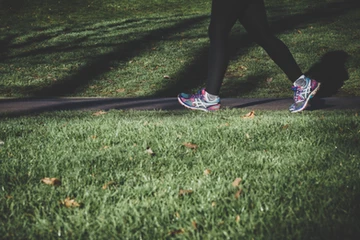Many people in the United States will experience back pain at some point in their lives. In fact, I believe the number is close to 90%! One of the ways that we can help prevent that from happening to us is walking. It’s super simple, but often overlooked!
Why does walking help reduce lower back pain? Here are a few of the things it does:
- Helps strengthen the muscles around the spine. Your core, abdominal and lower back muscles play a critical role in maintaining spinal stability. In many individuals, lack of exercise and sedentary jobs and lifestyles have made these muscle weak. This can contribute to spinal misalignments. While professional services like a Chiropractic adjustment may be required for complete resolution of the problem, walking helps keep these muscles strong.
- Increases blood flow. This is very important as small blood vessels of your spine can become constricted and deprive muscles and tissues of oxygen and nutrients needed for optimal health. Walking helps increase blood flow.
- Helps flush out toxins. As muscles perform their daily functions, they produce toxic by-products. Over time, a build-up of these toxins can accumulate and cause stiffness. Walking helps us flush these toxins and maintain flexibility in our spines.
When we are inactive, the muscles in our backs, hips and legs can become stiff. The stiffness can altar the the normal, healthy curvature of our backs. We perform a posture analysis on new clients in the office and we are always amazed at how posture can be distorted and cause a number of spinal and other health related issues.
Walking stretches and strengthens the muscles of the ligaments, back, legs, hips, glutes, hamstrings and lower back, and is an absolutely critical part of the equation of overall health. In fact, some of the other benefits of walking include:
– Weight loss and maintenance
– Blood pressure regulation
– Improvement in Cholesterol
– Decreased levels of anxiety and depression
– Reduced risk of chronic diseases like heart disease and diabetes
– Improved mental function and decreased dementia
To make the most out of walking and prevent lower back pain, start with 5-10 minutes if you are not currently active. You can increase this to at least 30 minutes or more as you progress. You can use a treadmill or indoor track if the outside weather is an issue.
If you are experiencing pain with walking, you might want to try walking in a pool that is about waist deep. This takes some of the load off your body.
Stand up straight while you walk and try to keep your head directly above your shoulders (not slumped forward). Keep your shoulders relaxed and gently swing your arms while taking long strides.
For best results, aim to walk at least 3 times per week for at least 30 minutes. You will be glad you did!
Sometimes it might be necessary to seek the help of a professional for low back pain. If we can be of help, please reach out to our Thrive Chiropractic office at 417-598-0080 and we’ll do our very best to help you.
To your health,
Dr. Jeni


